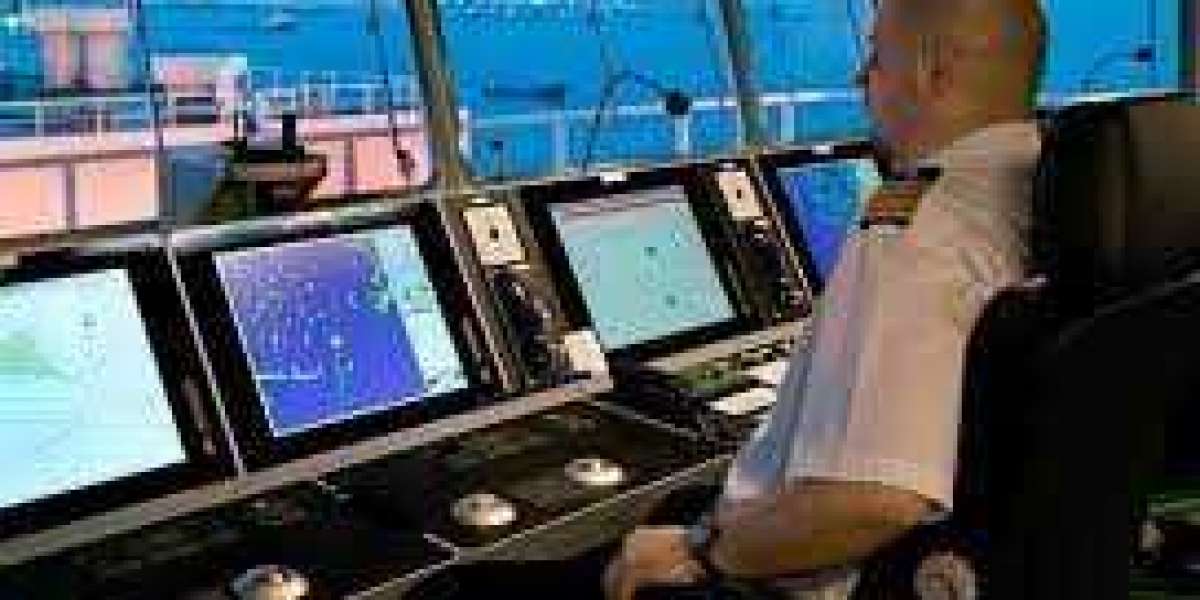Key Players:
exact Earth Ltd. (Canada), Kongsberg Gruppen ASA (Norway),SAAB AB (Sweden), Furuno Electric Co. Ltd. (Japan),L-3 Communication Holdings Inc. (US), Orbcomm Inc. (US), True Heading AB (Sweden), Garmin International (Switzerland), CNS Systems AB (Switzerland),Japan Radio Co., Ltd. (Japan).
Market Overview:
Automatic Identification System Market Is Projected To Grow at a USD 374.99 Million In 2030 at a CAGR Of 6.5% by 2022-2030. An automatic identification system (AIS) is a tracking system that the ships are equipped with. The system is meant for coastal navigation and the enhancement of safety levels on sea routes. It provides essential information pertaining to the identification and positioning of ships operating in the vicinity of vessels and shore stations. According to the International Maritime Organization (IMO) mandates, cargo ships of 500 gross tonnage or above sailing in local waters, ships of 300 gross tonnage or above sailing in international waters, and all the passenger ships are required to be equipped with the AIS equipment. AIS transponders broadcast data at regular intervals without fail, and their functioning is autonomous.
Increasing maritime transport and improved navigation maritime traffic managementare expected to drive the growth of the global automatic identification system market. Maritime transport forms the core of international trade, and its real-time tracking is possible. Cargo ships are equipped with AIS equipment that emits radio signals at regular intervals without fail to provide information pertaining to identification, speed, and location.
In addition, many private service providers use terrestrial receivers and satellites to intercept these radio signals and transform them into organized data feeds. As per the United Nations Conference on Trade and Development (UNCTAD), more than 80% of global merchandise trade in terms of volume and over 70% by its value in 2017 was carried out by the international shipping industry.
However, in 2019, the global merchandise trade contracted by 0.5% in terms of volume. The major factors responsible for this decline includedthe rise in global trade tensions and tariffs, which, in turn, resulted in a decrease in imports from developing countries, including China and other emerging economies of the world. Furthermore, the global maritime transport industry growth further declined in 2020, owing to the unprecedented disruption caused by the COVID-19 pandemic. Thus, the near-term outlook for the global maritime transport industry looks grim but given that maritime transport is a crucial enabler of the effective functioning of international supply chains, the maritime transport industry is expected to register positive growth, and in turn, push the global supply chain towards a sustainable recovery. Thus, increasing maritime transport and improvements in maritime traffic management are expected to drive the growth of the global Key Automatic Identification System Market Players during the forecast timeline.
Market USP
Increasing Demand for Advanced Maritime Traffic Solutions
Segmental Analysis
By Class
The Class A Segment is Expected to Dominate the Market: The class A segment is expected to dominate the market and register a higher CAGR during the forecast period, 2020 to 2027. The growth can be attributed to the mandated installation of class A Automatic Identification Systems Market on Safety of Life at Sea (SOLAS) vessels. SOLAS vessels include vessels of over 500 gross tonnage not engaged on international voyages, vessels of more than 300 gross tonnage engaged on international voyages, and all the passenger ships irrespective of their size. According to the International Convention for the Safety of Life at Sea, the SOLAS vessels are to be equipped with class A AIS. Additionally, the class A AIS is used for AIS application-specific messages, such as meteorological and hydrological data, electronic broadcast notice to mariners, and other marine safety information. As a result, the demand for the class A AIS is forecasted to rise considerably, which, in turn, drives the growth of the automatic identification system market in the class A segment during the forecast period.
The Demand for Class B Segment is Expected to Increase:Class B AIS is meant to be used in non-SOLAS vessels. Non-SOLAS vessels comprise domestic, commercial vessels and recreational boats. Class B AIS has less functionality as compared to Class A AIS. However, they can be used for operations and communications in tandem with the Class A AIS. Thus, the demand for class B AIS is likely to register positive growth during the forecast period.
By Platform
The Vessel-Based Segment is Expected to Witness Higher Growth in the Market: The vessel-based segment is expected to register a robust growth rate and is expected to register higher CAGR during the review period. Across the globe, there has been rising incorporation of AIS-based advanced systems to the marine vessels to create strong demand for vessel-based AIS. Furthermore, the increasing acquisition of vessels by major economies across the world to bolster their naval fleet strength is driving the demand for vessel-based AIS units. Thus, the vessel-based AIS segment is expected to register a higher CAGR during the forecast period.
The onshore-based segment is expected to grow considerably: Of the two segments, the onshore-based segment accounted for a smallerbut significant market share in 2020. This is due to the onshore-based usage of AIS in collision avoidance. Moreover, the impact onshore-based AIS has on the onshore-based services, including port management, vessel traffic service (VTS), and other such essential services,are useful and crucial to the growth of the international maritime transport industry.
Related Reports:
Smart Weapons Market Research Report Information by Product (Missiles, Munitions, Guided Rockets, Guided Projectiles, Guided Firearms, and Others), By Technology (Infrared, Laser, Radar, Positioning System (GPS), and Others), By Platform (Land, Maritime, and Airborne), And By Region (North America, Europe, Asia-Pacific, And Rest Of The World) –Market Forecast Till 2030.
Search and Rescue Robots Market Research Report: Information by Operation (Autonomous and Remotely Operated), Platform (Land, Maritime, and Airborne), and Region (North America, Europe, Asia-Pacific, Middle East Africa, and Latin America)—Forecast till 2030
About Market Research Future:
Market Research Future (MRFR) is a global market research company that prides itself on its services, offering comprehensive and accurate analysis with respect to various markets and consumers worldwide. Market Research Future has the distinguished goal of providing customers with optimal quality research and granular research. Our market research by products, services, technologies, applications, end users, and market players for global, regional, and national market segments, allows our customers to see more, learn more, and do more, helping to answer your most important questions
Contact:
Market Research Future (part of Wantstats Research and Media Private Limited),
99 Hudson Street, 5Th Floor, New York, New York 10013,
United States of America
+1 646 845 9312


